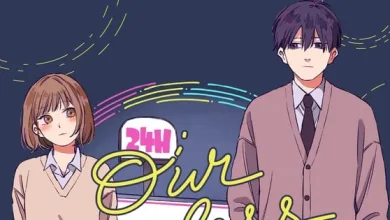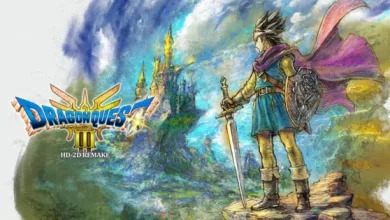Fist of the North Star Volume 14 Manga Review – Review

Fist of the North Star Volume 14 provides Kenshiro with the most interesting set of villains of the post-Raoh era by digging into a familiar bag of tricks.
This volume, almost more than any other, has me split on how to feel about the events. It is equal parts novel ideas and the same old, familiar, and unique. The net effect is a positive one – I enjoyed this volume a lot once the dust had settled – but it can be hard to shake the lingering sense that it’s too safe and same-y regarding plot developments and the new villains that Kenshiro faces. Still, as soon as I start to lament the sense of repeated elements, I can’t help but focus on how many new concepts and story beats are on display while still delivering the terrific art and unmatched violence that typifies the series.
For better and for worse, Buronson and Tetsuo Hara return to the concept of brothers as villains. The Hokuto Ryoken wielders Han, Hyoh, and Kaioh become a counterpart to the drama of the Hokuto Shinken brothers. Han is the immediate threat early in the volume, with Kenshiro continuing his battle against Han. But Hyoh and Kaioh emerge as pseudo-replacements for Toki and Raoh, serving as older brother figures (literally and metaphorically) that Kenshiro must overcome.
This is where I am mixed on the execution in this section. It’s inarguable that one of the core defining themes of Fist of the North Star is drama amongst brothers surrounded by martial arts. So, drawing from this well is not only expected but one of the decisions the audience is most likely to resonate with, as that is a big part of what made the series such a phenomenon. At the same time, it’s hard to figure out whether this feels like a creative new twist on old themes or just rehashing the stuff that worked before. Can you recreate the magic of the relationship between Kenshiro, Raoh, Toki, and Jagi? Or does the attempt to make lightning strike twice immediately draw comparisons to the superior storyline we saw before? I still haven’t fully answered these questions for myself, and chapter-to-chapter, I can sense my mood shifting on whether this was the right path to take.
One thing that I feel is an unequivocal improvement is the introduction of the master Jukei. Jukei is the elder teacher of the Hokuto Ryoken style and serves as the counterpart to Ryuken, who trained the Hokuto Shinken brothers. What’s interesting about Jukei is that he has a lot more of an arc than Ryuken did. Sure, we explored some of Ryuken’s past via flashbacks, but he never really stood out as a compelling character. Ryuken was always more archetype than personality, serving as the martial arts master, while Kenshiro, Raoh, and the others got into more dramatic fare. He was the stable foundation that allowed the more varied personalities under his tutelage to flourish and be exceptional.
Jukei is far more engaging to learn about. His drive to master the Hokuto Ryoken fighting style, descent into demonic rage, tragic slaying of his family, and loss of control – it’s engaging stuff. Jukei’s struggles and regrets color our understanding of the Hokuto Ryoken style and make it stand apart in a way prior styles haven’t. Most fighting styles in the series have focused on what they do to the opponent, but now Hokuto Ryoken has an emotional dimension wherein strength is not the issue. Instead, it has a cost in the ability to control oneself.
It isn’t all upside with Jukei and the Ryoken school. Hyoh represents my mixed feelings for the volume’s plot. Hyoh is Kenshiro’s older brother by blood, and in classic pulp storytelling tradition, he does not remember these events because of amnesia. This memory loss was caused by Jukei sealing his memories away. It is hard to buy this setup or find it all that engaging. Still, it does make for a great dramatic scene with Jukei battling Hyoh to let him release his true memories of Kenshiro and some dramatic flashback sequences from Hyoh’s perspective. Still, it’s had to shake the sense that we had to have another brother at any cost and are bending over backward to find a way to make him relevant to Kenshiro.
Kaioh stands out at this stage as a villain, at least. He is not too interesting as a fighter, but he does have a cool presence on the page with the fully armored look. The way the armor breaks and changes throughout the battle looks terrific too, and he is one of the few villains who sticks around by pure dint of being hard to kill – a rarity against Kenshiro.
One area I have never mixed on is art. It is, in a word, superb. Tetsuo Hara has only gotten better as the series has gone on and this is evident in this volume. Beyond the usual violent martial arts and heavy metal character designs, I’d say in these chapters, Tetsuo Hara shows his penchant for backgrounds. There are some truly jaw-dropping landscape shots, from piles of bones to alien landscapes and strange architecture. The land of the Asura feels completely unfamiliar while still retaining the core aesthetic of the post-apocalyptic wasteland.
All in all, I am positive about this volume. After all, even a somewhat mixed Fist of the North Star volume still ranks as some of the best manga you can get your hands on. There’s no doubt that the series is leaning on its strengths. When it works, it works flawlessly. But some of these elements are starting to creak from overuse.
Source link
#Fist #North #Star #Volume #Manga #Review #Review


